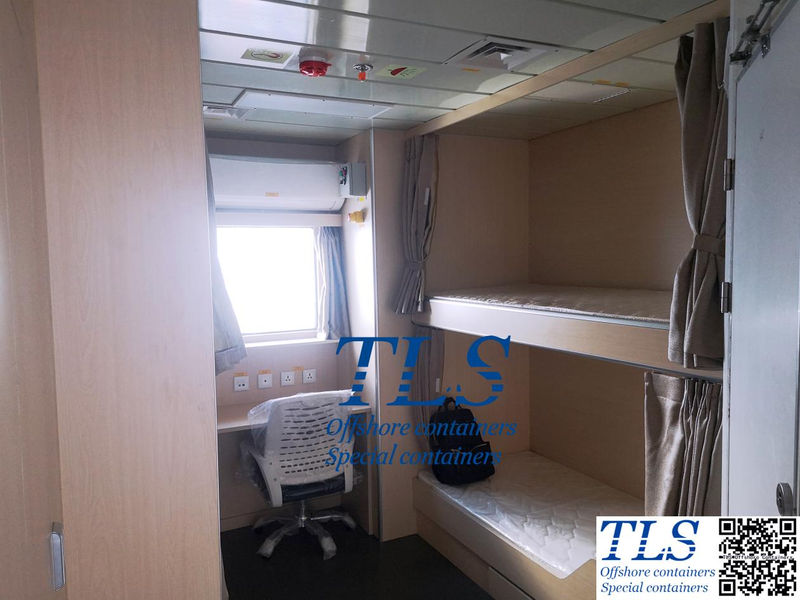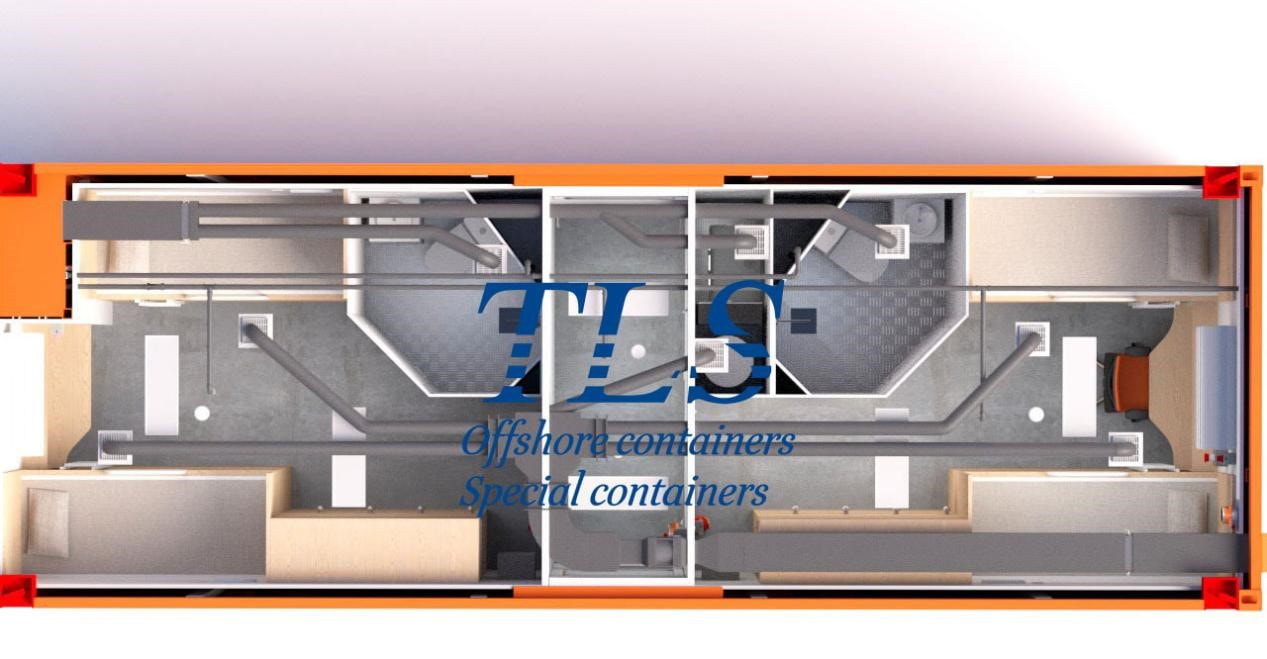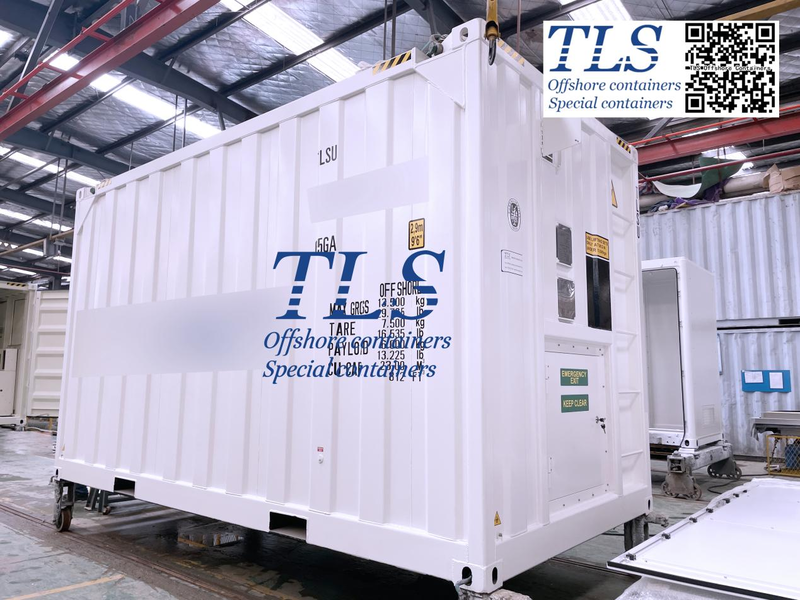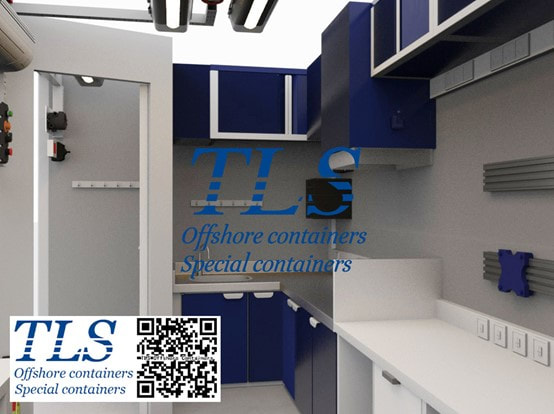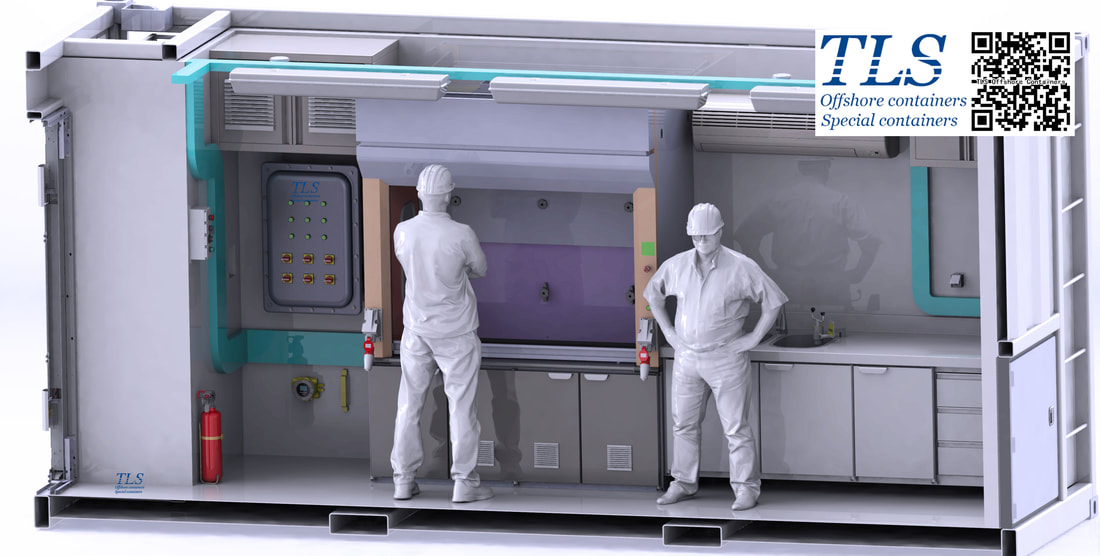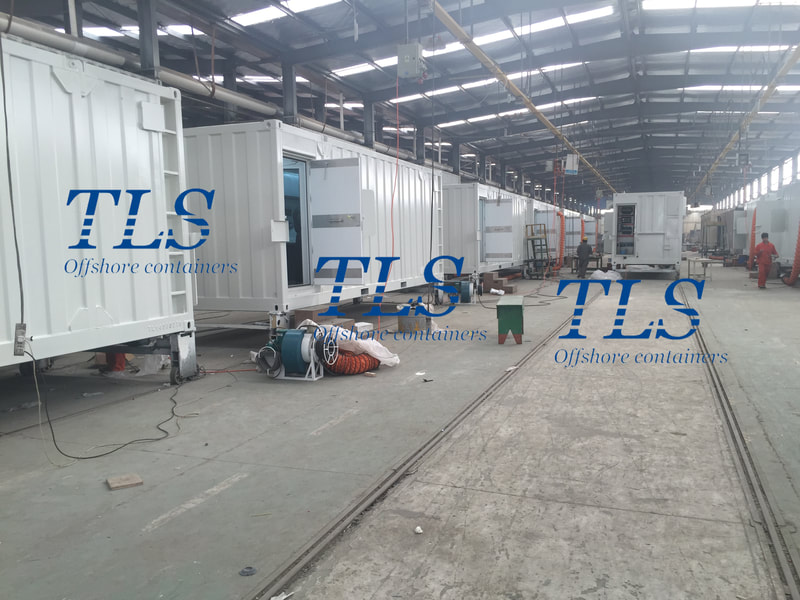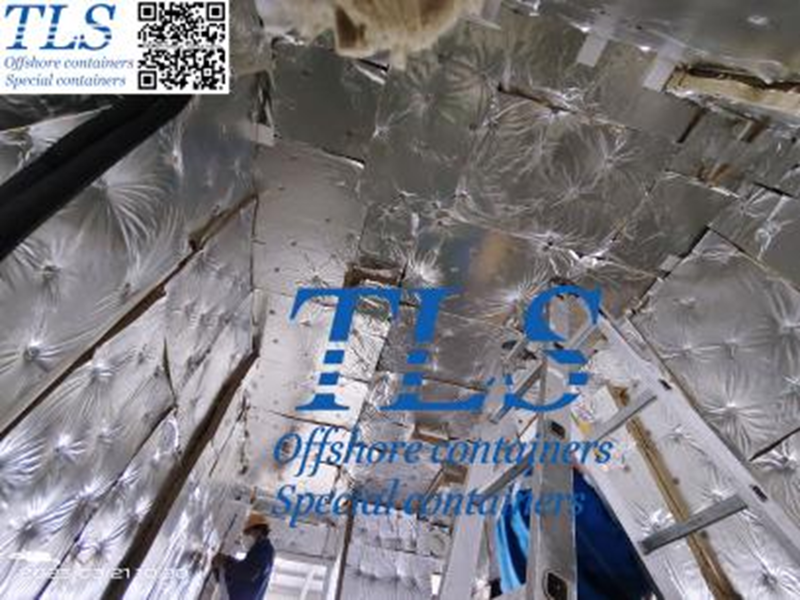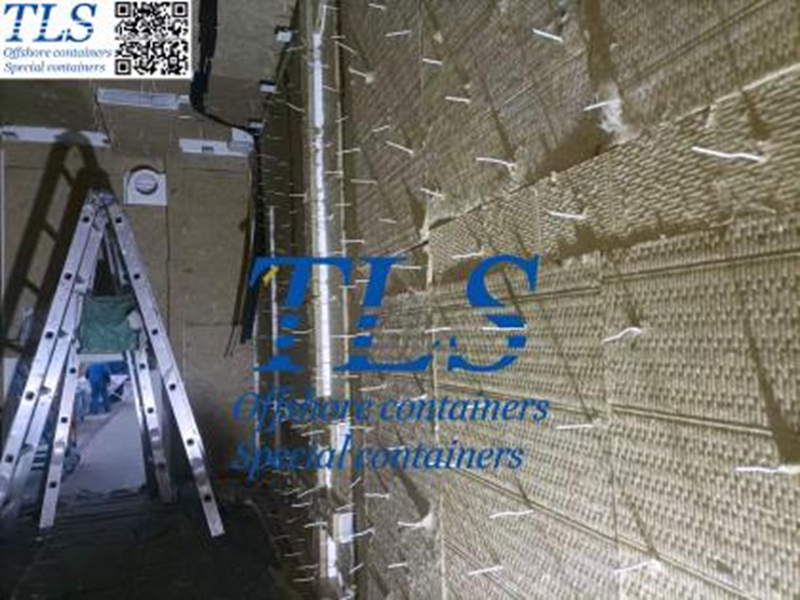Comprehensive Lifecycle Planning and Design Analysis of Containerized Energy Storage Systems5/31/2024
Containerized energy storage systems encompass all stages from planning, design, construction, and operation to final decommissioning. This process involves not only the technical implementation but also considers economic feasibility, environmental impact, and social responsibility. ## Lifecycle Stages of Energy Storage Systems The lifecycle of an energy storage system can be divided into seven key stages: planning and design, manufacturing, packaging and transportation, installation, commissioning, operation, maintenance and inspection, and decommissioning. Safety analysis for these systems can be categorized into electrical/electronic safety, thermal safety, mechanical safety, and chemical safety. A comprehensive safety plan should be implemented at each stage to ensure the product meets all safety requirements. ### 1. Planning and Design Stage **Needs Analysis:** Determine the application scenarios, scale, and performance requirements of the energy storage system. This includes identifying whether the system will be used for grid stabilization, renewable energy integration, backup power, or other purposes. **Battery Selection:** Choose the appropriate energy storage technology based on the identified needs. Options include lithium-ion batteries, lead-acid batteries, and flow batteries. Each technology has its advantages and suitability depending on the specific application. **System Design:** This includes layout design, electrical design, structural design, and thermal management design. The layout should ensure efficient use of space and ease of maintenance, while electrical design should focus on reliability and safety. Structural design must consider the robustness and durability of the system, and thermal management should prevent overheating and ensure optimal performance. **Safety Design:** Consider the safety of the system, including fire prevention, explosion protection, and overheat protection. This involves incorporating safety features such as fire suppression systems, thermal insulation, and emergency shutdown mechanisms. ### 2. Manufacturing Stage **Material Selection:** Select appropriate materials to ensure the system's performance and lifespan. This includes choosing materials that can withstand the operational environment and have minimal environmental impact. **Quality Control:** Implement strict quality control measures throughout the manufacturing process. Each component must meet established standards to ensure overall system reliability. **Assembly Testing:** Conduct preliminary functional tests after assembling the components to ensure they work correctly. This includes electrical tests, mechanical integrity checks, and safety feature verification. ### 3. Packaging and Transportation **Packaging and Labeling:** Use appropriate packaging materials and methods to protect the batteries during transportation. This includes shock-absorbing materials and secure enclosures to prevent damage. **Labeling:** Clearly label the packaging with information such as battery type, weight, and special handling instructions to ensure proper handling by transport personnel. ### 4. Installation Stage **Site Preparation:** Ensure that the installation site meets the requirements for the energy storage system. This includes evaluating the site for structural integrity, electrical infrastructure, and environmental conditions. **Equipment Installation:** Install the equipment according to the design blueprints. This involves positioning the containers, securing them, and connecting all necessary components. **Connection and Commissioning:** Complete the electrical connections and perform system commissioning to ensure everything operates correctly. This includes running initial tests to verify functionality and safety. ### 5. Commissioning Stage **System Inspection and Testing:** Conduct a comprehensive inspection and testing of the installed system. Verify that all connections and functions are correct and that the system is safe and reliable. **Electrical System Verification:** Ensure that all electrical connections are accurate and secure to prevent issues such as short circuits or leakage. This involves checking wiring, circuit breakers, and protective devices. ### 6. Operation Stage **Monitoring and Maintenance:** Continuously monitor the system's operational status and conduct regular maintenance and inspections. Use monitoring tools to track performance metrics and detect potential issues early. **Performance Optimization:** Optimize the system based on operational data to improve efficiency and reliability. This might involve adjusting settings, upgrading components, or implementing new software updates. **Fault Handling:** Promptly address any system faults to ensure stable operation. This includes diagnosing issues, performing repairs, and replacing faulty components. ### 7. Maintenance and Inspection Stage **Regular Maintenance Plan:** Develop a regular maintenance plan that includes cleaning, tightening connections, and checking battery status. This ensures the system remains safe and reliable over its lifespan. **Battery Status Monitoring:** Regularly check the battery status, including capacity and internal resistance, to prevent aging, damage, or abnormal conditions. Use diagnostic tools to assess battery health and predict replacement needs. ### 8. Decommissioning Stage **Decommissioning Assessment:** Evaluate the system for decommissioning when it reaches the end of its designed lifespan or when its performance significantly declines. This includes assessing whether components can be repurposed or recycled. **Disassembly and Recycling:** Safely disassemble the equipment and recycle key components such as batteries to minimize environmental impact. Follow proper disposal guidelines to handle hazardous materials. **Environmental Impact Assessment:** Assess the environmental footprint of the entire lifecycle, including carbon emissions and resource consumption. Implement measures to mitigate negative impacts and promote sustainability. In conclusion, the lifecycle of containerized energy storage systems is complex and multifaceted, requiring careful planning and execution at each stage. By addressing technical, economic, and environmental considerations, we can ensure the safe, efficient, and sustainable operation of these systems. This comprehensive approach not only maximizes the benefits of energy storage but also aligns with broader goals of environmental stewardship and social responsibility. In the realm of offshore operations, where every element must withstand the rigors of the sea, accommodation solutions play a pivotal role. Enter TLS Offshore Containers, a pioneering force in revolutionizing offshore living experiences. Let’s delve into how TLS containers are reshaping the landscape of offshore accommodations, blending innovation, durability, and efficiency. Introduction: Offshore projects demand accommodations that are not only robust and secure but also flexible and efficient. TLS Offshore Containers stands tall as a beacon of innovation in this domain, offering modular living solutions that cater to the unique needs of offshore operations. From oil and gas platforms to renewable energy installations, TLS containers are engineered to deliver unparalleled performance in the harshest marine environments. Advantages of TLS Offshore Containers:
Applications:
Conclusion: TLS Offshore Containers epitomizes innovation and reliability in the realm of offshore accommodations. With their durable construction, modular flexibility, safety compliance, cost-effectiveness, and sustainability initiatives, TLS containers set a new standard for offshore living solutions. As offshore operations continue to evolve, TLS remains steadfast in its commitment to delivering superior accommodation solutions that meet the ever-changing needs of the industry. Choose TLS for offshore accommodations that redefine comfort, efficiency, and durability on the high seas. TLS Offshore Containers / TLS Special Containers is a global supplier of standard and customised containerised solutions. Wherever you are in the world TLS can help you, please contact us. More information about accommodation modulars, offshore accommodation cabins, gallery module, mess module, etc. Please download TLS accommodation modular brochure , TLS ABS approved offshore accommodation module brochure for reference. Key words: #Offshore living #Modular accommodation #Offshore operations #Marine environments #Efficiency #Safety compliance #Sustainability #Innovation #Remote locations #Oil and gas platforms #Renewable energy installations #Modular design #Rapid deployment Written by OliverIntroduction: In the realm of deep-sea exploration, safety and innovation are paramount. TLS Offshore Containers, a pioneering company renowned for its commitment to excellence, has introduced a groundbreaking solution to revolutionize underwater exploration: the ROV Pressurized Cabin. In this SEO blog post, we delve into the significance of this innovative technology and its transformative impact on underwater expeditions. Unveiling the ROV Pressurized Cabin: TLS Offshore Containers' ROV Pressurized Cabin is a marvel of engineering, designed to redefine the possibilities of deep-sea exploration. This cutting-edge cabin offers a secure environment for human operators, enabling direct occupancy in the depths of the ocean. Equipped with advanced safety features and state-of-the-art technology, it ensures unparalleled protection and comfort for operators during underwater missions. Safety at the Forefront: Safety is the cornerstone of TLS Offshore Containers' design philosophy, and the ROV Pressurized Cabin exemplifies this commitment. Constructed with robust materials and equipped with stringent safety protocols, it shields occupants from the extreme pressures and environmental hazards of the deep sea. TLS prioritizes the well-being of operators, providing peace of mind in the most challenging underwater conditions. Empowering Exploration: The ROV Pressurized Cabin transcends the limitations of traditional remote-operated vehicles (ROV) by facilitating direct human interaction with the underwater environment. This human presence enhances the scope and quality of exploration, allowing operators to conduct intricate tasks and make real-time observations with unprecedented clarity and precision. TLS empowers exploration teams to push boundaries and unlock new discoveries beneath the waves. Adaptability and Versatility: TLS Offshore Containers' commitment to innovation extends to the adaptability and versatility of the ROV Pressurized Cabin. Whether navigating complex underwater terrain, conducting scientific research, or inspecting offshore infrastructure, this versatile technology rises to the challenge. Its modular design enables seamless customization to suit the unique requirements of diverse exploration projects, ensuring maximum efficiency and effectiveness. Sustainable Exploration: TLS Offshore Containers recognizes the importance of responsible environmental stewardship in deep-sea exploration. The ROV Pressurized Cabin facilitates non-invasive observation and data collection, minimizing disturbance to fragile underwater ecosystems. By promoting sustainable exploration practices, TLS contributes to the preservation and conservation of marine environments for future generations. Conclusion: The ROV Pressurized Cabin by TLS Offshore Containers represents a paradigm shift in underwater exploration technology. With its unwavering focus on safety, empowerment, adaptability, and sustainability, it heralds a new era of discovery beneath the ocean's surface. As exploration teams embark on voyages of exploration and scientific inquiry, TLS's innovative cabin serves as a beacon of progress and possibility, driving forward the frontiers of human knowledge and understanding in the depths of the sea. TLS Offshore Containers / TLS Special Containers is a global supplier of standard and customised containerised solutions. Wherever you are in the world TLS can help you, please contact us. Product brochures: Offshore pressurised mud logging cabin brochure MCC | Switchgear | VFD | VSD pressurised shelter Key words: #ROV Pressurized Cabin #TLS Offshore Containers #Deep-sea exploration #Underwater technology #Safety features #Exploration capabilities #Innovation #Versatility #Adaptability #Environmental conservation #Sustainable exploration #Modular design #Underwater observation Written by OliverIn the dynamic landscape of offshore industries, efficiency, and safety are paramount. With the demand for reliable equipment that can withstand harsh environments, TLS introduces the A60 Offshore Pressurized Container, revolutionizing offshore operations. In this blog post, we delve into the features, benefits, and significance of this innovative solution in enhancing productivity and mitigating risks in offshore settings. Understanding the A60 Offshore Pressurized Container The A60 Offshore Pressurized Container by TLS is a cutting-edge solution engineered to meet the rigorous demands of offshore environments. Designed to withstand extreme conditions such as high pressure, corrosive elements, and adverse weather, this container sets a new standard in reliability and durability. Key Features and Benefits
Applications in Offshore Industries The versatility of the A60 Offshore Pressurized Container makes it indispensable across a wide range of offshore applications, including:
Conclusion In the ever-evolving landscape of offshore industries, the A60 Offshore Pressurized Container by TLS emerges as a game-changer, combining innovation, reliability, and safety to optimize operations and mitigate risks. With its robust construction, advanced features, and customizable configurations, this container offers unmatched versatility and performance in demanding offshore environments. Embrace the future of offshore operations with TLS and experience the difference with the A60 Offshore Pressurized Container. TLS Offshore Containers / TLS Special Containers is a global supplier of standard and customised containerised solutions. Wherever you are in the world TLS can help you, please contact us. Product brochures: Offshore pressurised mud logging cabin brochure MCC | Switchgear | VFD | VSD pressurised shelter Key words: #Offshore industry #Oil and gas #Marine engineering #Subsea operations #Rigging solutions #Containerization #Hazardous materials #Seismic exploration #Remote locations #Modular design #Environmental protection #Logistics management Written by OliverWhen it comes to offshore living, comfort and safety are paramount. TLS Offshore Containers provides top-of-the-line 20ft accommodation containers designed to meet the rigorous demands of offshore environments while ensuring a comfortable living space. These containers are meticulously crafted to offer both functionality and comfort, making them an ideal choice for offshore accommodation. Let's delve into the features, construction specifications, and benefits of these high-quality accommodation containers. #### Superior Construction and Robust Design Each TLS Offshore accommodation container is built to the highest standards, ensuring durability and longevity. The containers are shot blasted to SA 2.5 and coated with a DNV-approved, three-coat paint system, achieving a total paint thickness of 250 microns. This robust paint system provides excellent protection against the harsh offshore environment, preventing corrosion and wear. The standard color is RAL 9003 Signal White, but clients have the option to customize the color and add company markings as needed. #### Accessible Service Area One of the standout features of these containers is the accessible service area. This dedicated space houses essential equipment such as the hot water heater, transformer, and general electrical equipment. Designed for easy access, this area allows for efficient servicing and maintenance, minimizing downtime and ensuring continuous operation. #### Comfortable Living Spaces TLS Offshore's accommodation containers are designed with comfort in mind. Each module can be configured with either two sets of bunk beds or single beds, providing flexibility to suit different needs. The containers also include lockers with ample hanging and shelving space, allowing occupants to store their belongings neatly. #### En-Suite Shower Room The en-suite shower room is a significant convenience, offering a private and comfortable space for personal hygiene. Equipped with a shower that has an integral hot water system, occupants can enjoy warm showers regardless of the weather conditions outside. This feature is particularly important in offshore environments where comfort and morale are crucial. #### Work and Relaxation Spaces Understanding the need for both work and relaxation, the accommodation containers come with a desk and workspace, complete with a pin board and chair. This setup provides a conducive environment for work-related activities. Additionally, the attractive decor and soft furnishings create a relaxing atmosphere, helping occupants unwind after a long day. #### Advanced Climate Control To ensure a comfortable living environment, each container is fitted with an air-conditioning unit with individual thermostatic control. This feature allows occupants to adjust the temperature to their preference, ensuring a comfortable living space regardless of external weather conditions. #### Safety Features Safety is a top priority for TLS Offshore. The accommodation containers are equipped with a PLC-based fire and gas detection system, providing early warning in case of emergencies. The Category II lighting, designed for low brightness, enhances visibility without causing eye strain, further contributing to a safe living environment. #### High-Quality Fixtures and Fittings Every aspect of the accommodation containers reflects quality and attention to detail. From the high-quality fixtures and fittings to the carefully chosen decor and soft furnishings, these containers are designed to provide a premium living experience. The combination of functionality and aesthetics ensures that occupants can live and work comfortably. #### Quick and Easy Installation One of the key advantages of TLS Offshore's accommodation containers is their quick and easy hook-up to onboard services. This feature reduces the time and effort required to set up the containers, allowing for rapid deployment in offshore environments. Whether for temporary or long-term use, these containers offer a practical and efficient solution for offshore accommodation needs. ### Why Choose TLS Offshore's Accommodation Containers? Choosing TLS Offshore's accommodation containers means opting for a solution that prioritizes safety, comfort, and efficiency. Here are some of the key benefits: - **Durability and Protection:** The robust construction and advanced paint system ensure the containers can withstand the harsh offshore environment, providing long-term durability and protection. - **Flexibility and Customization:** With options to customize the color and add company markings, clients can tailor the containers to their specific requirements. - **Comfortable Living Space:** The well-designed interior, featuring comfortable beds, ample storage, and high-quality furnishings, ensures a pleasant living experience. - **Efficient Servicing:** The accessible service area allows for easy maintenance, ensuring the containers remain operational with minimal downtime. - **Safety and Security:** The advanced fire and gas detection system, along with the low-brightness lighting, enhances the safety and security of the occupants. - **Rapid Deployment:** The quick and easy hook-up to onboard services makes these containers ideal for immediate use, saving time and resources. ### Conclusion TLS Offshore's 20ft accommodation containers are a testament to the company's commitment to quality, safety, and comfort. Designed to meet the unique challenges of offshore environments, these containers offer a practical and efficient solution for accommodating personnel. With their robust construction, advanced safety features, and comfortable living spaces, these containers are an excellent choice for anyone seeking reliable offshore accommodation. For more information on TLS Offshore's accommodation containers and to explore customization options, visit [TLS Offshore Containers](https://www.tls-containers.com). Experience the perfect blend of comfort and safety with TLS Offshore's accommodation containers. As the world shifts towards sustainable energy solutions, the United States is witnessing a remarkable transformation in its energy landscape, driven by the rapid expansion of Battery Energy Storage Systems (BESS). These systems, which store electricity for later use, are crucial for stabilizing the grid, especially as renewable energy sources like solar and wind become more prevalent. This article explores the burgeoning BESS market in the U.S., with a spotlight on TLS Energy International’s comprehensive solutions. **The Growing Demand for Energy Storage** The integration of renewable energy into the grid poses a significant challenge: intermittency. Solar panels generate electricity only when the sun is shining, and wind turbines produce power only when the wind is blowing. This variability can lead to imbalances in the grid, causing supply issues during peak demand periods, especially in the evening when solar generation drops off but electricity consumption remains high. California is a prime example of how BESS can address these challenges. The state has been at the forefront of adopting large-scale batteries, which store excess solar power generated during the day and release it during the night. According to recent data, California's grid now boasts a battery storage capacity of 10,000 megawatts (MW), enough to power millions of homes for several hours. This capacity is second only to China in terms of global installations. **Case Study: California’s Solar and Battery Integration** A recent energy production graph from California in April 2024 illustrates the crucial role of BESS. During the daytime, solar power dominates, significantly reducing the need for other energy sources. As the sun sets and solar production drops, battery systems kick in, supplying the stored energy to meet the evening peak demand. This seamless integration of solar and battery storage not only stabilizes the grid but also reduces reliance on fossil fuels. **TLS Energy International: Pioneering BESS Solutions** At the forefront of this energy revolution is TLS Energy International, a company dedicated to providing comprehensive BESS solutions. TLS Energy’s offerings are designed to meet the diverse needs of commercial and industrial (C&I) applications as well as large-scale energy storage projects. Their use of Lithium Iron Phosphate (LFP) batteries underscores their commitment to safety and efficiency. 1. **C&I Outdoor Cabinets**: TLS Energy’s C&I outdoor battery cabinets are engineered to deliver robust energy storage for commercial enterprises. These systems are ideal for businesses looking to reduce energy costs, enhance power reliability, and support their sustainability goals. The outdoor cabinets are weather-resistant, ensuring reliable performance in various environmental conditions. 2. **Large-Scale BESS**: For utility-scale projects, TLS Energy provides expansive BESS solutions capable of storing and dispatching large amounts of energy. These systems play a critical role in grid stabilization, peak shaving, and renewable energy integration. By leveraging advanced energy management systems, TLS Energy’s large-scale BESS optimizes energy use and enhances grid resilience. **Impact on the Energy Market** The deployment of BESS across the U.S. is reshaping the energy market. By providing a reliable source of power during peak demand periods, batteries are reducing the need for peaker plants, which are typically powered by fossil fuels and are costly to operate. This shift not only lowers greenhouse gas emissions but also results in significant cost savings for utilities and consumers. In Texas and Arizona, similar trends are emerging as utility companies adopt large-scale batteries to manage the intermittency of renewable energy sources. These states, known for their abundant solar and wind resources, are increasingly relying on BESS to ensure a stable and reliable power supply. As the technology matures and costs continue to decline, the adoption of BESS is expected to accelerate, driving further growth in the renewable energy sector. **Technological Advancements and Future Prospects** The future of BESS looks promising, with ongoing technological advancements enhancing their efficiency and affordability. Innovations in battery chemistry, such as the development of solid-state batteries, hold the potential to further improve energy density and safety. Additionally, advancements in energy management systems and grid integration technologies are making BESS more adaptable and easier to deploy at scale. TLS Energy is at the forefront of these advancements, investing in research and development to stay ahead of the curve. Their focus on safety, particularly with the use of LFP batteries, ensures that their solutions meet the highest standards of reliability and performance. As the demand for clean energy grows, TLS Energy’s commitment to innovation positions them as a leader in the BESS market. **Conclusion** The rise of Battery Energy Storage Systems is transforming the U.S. energy landscape, providing a crucial solution to the challenges posed by renewable energy integration. With states like California leading the way, the adoption of large-scale batteries is ensuring a more stable, reliable, and sustainable power grid. Companies like TLS Energy International are playing a pivotal role in this transition, offering cutting-edge BESS solutions that cater to both commercial and utility-scale applications. As the market continues to grow and evolve, the benefits of BESS will become increasingly apparent, driving further investment and innovation in the sector. The future of energy in the U.S. is bright, with BESS at the heart of a cleaner, more resilient power grid. In the dynamic realm of offshore energy exploration, efficiency and safety are paramount. Enter TLS Offshore Containers, a pioneering force in offshore energy storage solutions. Among our cutting-edge offerings stands the Offshore Pressurized Mud Logging Cabin, a game-changer in offshore operations. Understanding the Need Offshore drilling activities, particularly mud logging, demand a controlled environment where personnel can work efficiently amidst hazardous conditions. Traditional setups often fall short in providing the necessary safety measures and operational efficiency. TLS recognized this gap and engineered a solution that sets new standards in offshore mud logging. The TLS Difference TLS Offshore Pressurized Mud Logging Cabins are not just containers; they're meticulously crafted hubs of innovation. Let's delve into what sets them apart:
Applications and Beyond The versatility of TLS Offshore Pressurized Mud Logging Cabins extends beyond mud logging. These cabins find applications in various offshore scenarios, including MWD/LWD operations, ROV control, accommodation quarters, and more. Wherever there's a need for a secure and controlled environment in hazardous zones, TLS cabins deliver. Conclusion In the competitive landscape of offshore energy exploration, TLS Offshore Pressurized Mud Logging Cabins stand tall as beacons of innovation and reliability. With their unwavering commitment to safety, efficiency, and compliance, TLS continues to redefine industry standards and empower offshore operators worldwide. TLS Offshore Containers / TLS Special Containers is a global supplier of standard and customised containerised solutions. Wherever you are in the world TLS can help you, please contact us. Product brochures: Offshore pressurised mud logging cabin brochure MCC | Switchgear | VFD | VSD pressurised shelter Key words: #Offshore energy exploration #Mud logging operations #TLS Offshore Containers #Pressurized Mud Logging Cabins #Safety #Efficiency #Hazardous area certifications #Integration #Mobility #Productivity #Customized solutions Written by OliverNavigating the hazardous landscapes within the oil and gas industry is paramount to safeguarding lives and assets amidst potentially explosive environments. In this exploration, we'll delve into the intricacies of hazardous locations specific to this industry, understand their classification, and highlight the critical considerations imperative for maintaining a secure operational milieu. Understanding Hazardous Locations in the Oil and Gas Industry: Within the oil and gas sector, hazardous locations denote areas where the presence of flammable gases, vapors, combustible dust, or ignitable fibers poses a significant risk of fire or explosion. These zones encompass a spectrum of sites, including oil refineries, drilling rigs, production platforms, pipeline facilities, and storage tanks. Given the inherent dangers, stringent safety protocols and specialized equipment are indispensable for accident prevention and personnel protection. Classification of Hazardous Locations: Hazardous locations in the oil and gas industry are categorized into:
The Significance of Understanding Hazardous Locations: Ensuring worker safety within the oil and gas industry, particularly in offshore settings, is paramount. The formidable challenges posed by adverse weather, marine conditions, and geographical isolation necessitate a robust approach to risk management, rescue operations, and emergency preparedness. Offshore classification societies impose stringent regulations governing vessel operations to uphold safety standards. Throughout the operational lifecycle, from installation and commissioning to ongoing activities and decommissioning, continual risk assessment is imperative. This entails evaluating potential hazards, classifying the atmosphere, and deploying a hierarchy of controls to fortify safety measures for equipment, processes, and personnel. Given the prevalence of flammable chemicals used in extraction and processing operations, meticulous risk analysis and hazard classification are indispensable. These assessments inform recommendations regarding the requisite structural integrity of doors, walls, and buildings to contain fires effectively in the event of an incident. Proactive identification and mitigation of potential risks through comprehensive risk analysis, hazard classification, and the deployment of cutting-edge safety equipment are instrumental in averting accidents, prioritizing worker safety, and mitigating the impact of unforeseen incidents. Why TLS' Explosion-Proof Containers Excel in Hazardous Environments: TLS Offshore Containers offer intelligent pressurized containers designed to meet the unique demands of offshore energy storage. These containers feature integrated HVAC and power control systems, creating a secure environment for both personnel and equipment. A standout feature of TLS' intelligent pressurized containers is their incorporation of state-of-the-art safety monitoring systems. These systems encompass integrated fire and gas detection, pressurization, and emergency shutdown mechanisms, rendering them suitable for use in Zone 1 and Zone 2 hazardous areas. This ensures unwavering protection for personnel and equipment, even in the most challenging operational environments. In conclusion, a thorough understanding of hazardous locations, coupled with proactive risk management and the utilization of advanced safety solutions like TLS' explosion-proof containers, is paramount for safeguarding lives and assets in the oil and gas industry's dynamic and hazardous operational landscapes. TLS Offshore Containers / TLS Special Containers is a global supplier of standard and customised containerised solutions. Wherever you are in the world TLS can help you, please contact us. Product brochures: Offshore pressurised mud logging cabin brochure MCC | Switchgear | VFD | VSD pressurised shelter Key words: #Hazardous locations #Oil and gas industry #Safety measures #Risk management #Zone classification #Offshore operations #Hazardous substances #Explosion-proof containers #Safety equipment #Regulatory compliance Written by OliverEnsuring Safety at Sea: The Crucial Role of A60 Fire Rating for Offshore and Marine Containers5/24/2024
In the dynamic world of offshore and marine industries, safety stands as the paramount concern. Amidst the vast expanse of open water or the rugged environments of offshore drilling rigs, ensuring the safety of personnel and equipment is non-negotiable. One pivotal aspect of this safety framework is the A60 fire rating for containers, which plays a vital role in safeguarding against fire hazards in offshore and marine applications. Understanding A60 Fire Rating: A60 fire rating refers to a specific classification system that determines the fire resistance capability of a structure or material. In the context of containers used in offshore and marine settings, the A60 rating signifies the ability to withstand fire for a defined period, typically 60 minutes, without compromising its structural integrity or allowing the fire to spread to the adjacent areas. The Importance in Offshore and Marine Environments:
Choosing the Right A60 Fire-Rated Containers: Selecting suitable A60 fire-rated containers requires careful consideration of various factors, including:
Conclusion: In the demanding environments of offshore and marine operations, safety is paramount, and fire prevention is a top priority. A60 fire-rated containers play a critical role in mitigating fire risks, ensuring regulatory compliance, protecting personnel and assets, and sustaining operational continuity. TLS Offshore Containers / TLS Special Containers is a global supplier of standard and customised containerised solutions. Wherever you are in the world TLS can help you, please contact us. Key words: #A60 fire rating #Offshore containers #Marine applications #International Maritime Organization (IMO) #SOLAS compliance #Offshore platform safety #Marine vessel fire prevention #Safety standards for offshore equipment #Fire hazard mitigation #Regulatory compliance in maritime industry Written by OliverIn the dynamic field of renewable energy, Battery Energy Storage Systems (BESS) are revolutionizing how we store and manage energy from sources such as solar and wind. Known for their modularity, cost-effectiveness, and advanced functionalities, BESS containers are not merely about storing energy; they encompass a range of features essential for modern energy management. TLS Energy International is at the forefront of this revolution, offering bespoke BESS solutions tailored to the unique needs of our global clientele. #### Advanced Functionalities of BESS Containers BESS containers provide a variety of sophisticated functionalities that make them indispensable for efficient and reliable energy management. These features ensure seamless integration with the grid, optimize energy usage, and enhance overall grid stability. 1. **Ramp Rate Control / Power Smoothing** - BESS containers effectively manage the rate of power output changes, ensuring smooth transitions and reducing the impact on the grid. This ramp rate control smoothens power output, enhancing reliability and consistency in energy delivery. 2. **Energy Shifting** - Energy shifting allows for storing energy during periods of low demand and using it during high-demand times. This capability optimizes energy usage, ensuring that surplus energy generated from renewable sources is utilized when needed most, balancing supply and demand efficiently. 3. **Customizable Power Profiles / Schedules** - With customizable power profiles, users can set specific power output schedules to meet varying energy demands efficiently. This flexibility ensures better management of energy resources, reducing wastage and ensuring availability during peak times. 4. **Grid Voltage Control** - Maintaining stable grid voltage levels is crucial for grid reliability. BESS containers play a vital role in grid voltage control, ensuring voltage levels remain within prescribed limits to prevent power quality issues and ensure smooth operation of electrical equipment. 5. **Power Frequency Response (PFR) / P(f)** - BESS containers contribute to maintaining a consistent power frequency, crucial for grid stability. The Power Frequency Response feature enables quick adjustments in power output in response to frequency deviations, maintaining a stable and reliable grid. 6. **Peak Load Shaving** - By reducing the load on the grid during peak times, BESS containers enhance overall grid efficiency. Peak load shaving involves discharging stored energy during high demand periods, alleviating grid stress and reducing the need for peaking power plants, leading to cost savings. 7. **Reverse Power Protection** - Equipped with reverse power protection, BESS containers prevent the flow of power in the reverse direction, safeguarding the grid and connected equipment from potential damage caused by unintended power flows. 8. **Active Power Reserve (APR)** - The Active Power Reserve feature provides backup power to support the grid during sudden demand spikes or supply shortfalls. This ensures a reserve of power is always available to maintain grid stability during unexpected events. 9. **Enhanced Frequency Response (EFR) & Automatic Frequency Restoration Reserve (AFRR) / SRL** - These features enable BESS containers to respond quickly to frequency changes, ensuring grid stability. Enhanced Frequency Response and Automatic Frequency Restoration Reserve are critical for maintaining grid integrity, especially with high renewable energy penetration. 10. **Frequency Containment Reserve / PRL** - BESS containers help maintain frequency within prescribed limits through Frequency Containment Reserve. This function is essential for ensuring grid integrity and preventing frequency-related disturbances that could lead to power outages. 11. **Plant Level Inertia** - Plant Level Inertia contributes to the overall inertia of the power system, enhancing grid resilience. This function helps the grid withstand and recover from disturbances, providing a stabilizing force particularly important as traditional sources of inertia are replaced by renewable energy sources. #### TLS Energy International's BESS Solutions At TLS Energy International, we offer a range of BESS container solutions meticulously designed to cater to diverse energy storage needs: 1. **Container Enclosure Body with Battery Rack** - Our fundamental solution provides a customizable foundation for energy storage needs. This container enclosure body comes equipped with a battery rack, allowing clients the flexibility to integrate additional components as per their specific requirements. 2. **Semi-Integrated BESS Container Solution** - This comprehensive package includes a battery rack and essential auxiliary components such as a fire fighting system, a battery cooling system, a lighting system, and an earthing system. It provides a more complete solution while still leaving room for further customization based on client needs. 3. **Fully Integrated BESS Container** - Our fully integrated solution includes advanced cooling systems, state-of-the-art fire fighting systems, efficient DC combiners, sophisticated Battery Management Systems (BMS), essential lighting, and high-quality battery packs. This holistic approach ensures every aspect of the BESS project is addressed, providing a reliable, efficient, and seamless integration for energy storage needs. 4. **EPC Service for BESS Projects** - Our expertise encompasses providing specialized BESS containers alongside necessary AC section components, delivering a complete turnkey solution. Our dedicated team ensures seamless integration and efficiency, supporting clients from project conception to completion. #### Safety and Scalability: The Cornerstones of BESS Safety and scalability are paramount in the design and operation of BESS containers. Their modular design allows for easy stacking and combination, enabling customization according to project size, from small-scale installations to large-scale renewable energy farms. TLS Energy International’s BESS containers incorporate robust fire suppression systems, advanced battery management systems, and reliable thermal management to ensure safe operation under all conditions. These safety features protect the system from potential hazards, ensuring the longevity and reliability of the energy storage solution. #### BESS as a Pillar of Modern Energy Solutions BESS containers are more than just energy storage solutions; they are integral components for efficient, reliable, and sustainable energy management. Their range of functions, from ramp rate control to plant level inertia, makes them indispensable in the modern energy landscape. By supporting the integration of renewable energy sources, enhancing grid stability, and optimizing energy usage, BESS containers are paving the way for a cleaner, more resilient energy future. As the world transitions towards renewable energy, the role of BESS containers will become increasingly significant. Their ability to store and manage energy effectively ensures that renewable sources can be fully utilized, reducing reliance on fossil fuels and mitigating the environmental impact of energy production. In this context, BESS containers are not just a technological innovation but a cornerstone of the sustainable energy infrastructure of the future. Investing in and adopting BESS technology through TLS Energy International ensures energy providers and consumers contribute to a more sustainable and efficient energy system. The advanced functionalities and benefits of our BESS containers make them a crucial element in achieving a reliable, resilient, and environmentally friendly energy grid. |
Archives
July 2024
Categories
All
|
- Home
-
Containerised solutions
- Intelligent pressurised container | MUD logging cabin
- Battery energy storage system (BESS) container
- Flexible grid tied battery storage system
- Laboratory container | workshop container | Equipment containers
- Temporary refuge shelter | Toxic gas refuge | Safe haven
- Offshore accommodation cabin | office container
- Reefer container | Refrigerated container
- Intelligent waste water treatment container
- Fresh water generator container
- Cargo Containers
- Product photos & videos
- News & Blogs
- Contact us
|
Featured products
Intelligent pressurised container Temporary refuge (TR) shelter, toxic gas refuge (TGR) Battery energy storage system (BESS) container Containerised waste water treatment plant Fresh water generator container Reefer container Laboratory container, Workshop container Accommodation container Offshore closed container |
All Rights Reserved 2020 © TLS Offshore Containers / TLS Energy
|



